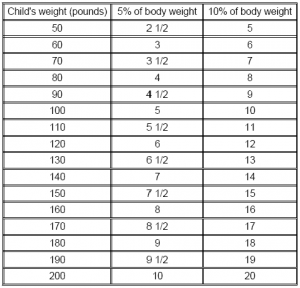A new school year is dawning. It’s a time of joy, new beginnings, and new injury risks. Here are some tips to stack the odds in your family’s favor, courtesy of the Virginia Chiropractic Association.
Healthy school lunches and healthy exercise together are an opportunity to protect your child’s heart, decrease future diabetes and arthritis risks, and create positive self-esteem. Healthy exercise can be as simple as a daily walk, and innovative communities have established safe walking routes to and from school.i Children should travel in groups, and need to be aware of traffic and potential human hazards. Should your child choose more intense forms of exercise such as recreational or organized sports, be sure they do so safely. Soccer goals need to be anchored properly. The U.S. Consumer Product Safety Commission notes 28 deaths between 1997 & 2007 caused by movable soccer goals that fell on children who climbed on them or hung on their crossbars.ii If your child is involved in collision sports like football or even skateboarding, a proper-fitting helmet can literally be life-saving. And if your child gets his or her joy on the playground, be sure it’s a safe one. The U.S. Consumer Product Safety Commission recommends a minimum of 9 inches of shock- absorbing material in the event of a fall from playground equipment. iii
absorbing material in the event of a fall from playground equipment. iii
Clothing can itself be life-saving. Reflectors on shoes or garments can make a child more visible in the dark. Also, remove drawstrings from young children’s sweatshirts and jackets– you may be removing a potential choking hazard.
Can words make a difference? Absolutely. Peer pressure is as powerful today as it was in prior generations. Have age-appropriate talks with your children about drugs, tobacco, alcohol, and sexual activity. Frame the conversation in terms that your child can relate to, using an ethical framework that is consistent with your world view.
For teens, the car is both a powerful tool and risk. Be sure your children understand the risks associated with distracting activities like texting while driving; and outline clear consequences for violations. In Virginia, drivers 18 and younger may not use a cell phone while the vehicle is in motion. iv Be sure that your child understands that violations of state law may mean consequences that are beyond your ability as a parent to mitigate.
Another major risk to your children’s safety is right behind them: their backpacks. Heavy backpacks can cause growing frames to experience temporary backaches, joint pain, even muscle strains and headaches; and some children may begin a lifetime of these problems. Here’s a simple tip: Weigh your child, and then weigh his or her backpack. Only 4% of parents do this simple test, yet the children of those “4 percenters” carry the lighter backpacks (Archives of Disease and Childhood. 2003;88:18-19). If you care about your child’s health and well-being — and you know you do — pull out the scale, and use it. A child’s daily backpack shouldn’t weigh more than 10% of total body weight, and some sources suggest a maximum of 5-10%. v Simply put, your 100 pound child’s backpack should weigh under 10 pounds. For a 150 pound child, 15 pounds is the recommended maximu
m. For a 75 pound child, 7 1/2 pounds is the most he or she may be able to safely carry on their back.
In addition to stressing young frames and growing structures, heavy backpacks cause acute injuries. In fact, a study in Pediatrics showed that emergency room visits associated with backpacks are most highly correlated with tripping, with the head and face being the most commonly seriously injured body parts. vi Why not protect your kids with a simple device that most of us already own– specifically, the bathroom scale?
Written by Daniel A. Shaye, DC, CCSP, FIAMA
All rights reserved.
You may republish or share with proper attribution
i http://www.saferoutesinfo.org/ ii www.cpsc.gov/cpscpub/prerel/prhtml07/07277.htmliii Ibid. iv http://www.dmv.state.va.us/webdoc/pdf/dmv16.pdf v http://www.amerchiro.org/con¬tent_css.cfm?CID=65 vi Wiersema, Brent M., DO, Eric J. Wall, MD, and Susan L. Foad, MPH. Acute backpack injuries in children. Pediatrics. Jan. 2003;111(1):163-166
